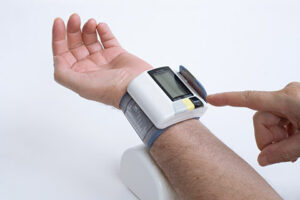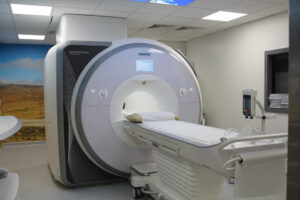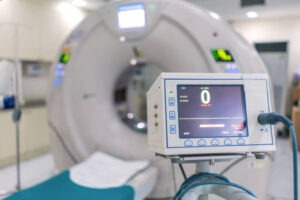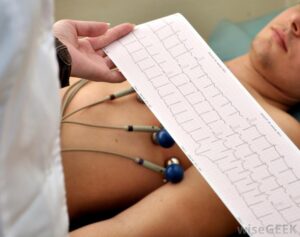The importance of maintaining a healthy heart cannot be overstated. Beyond its role as a muscle pumping blood, the heart is the linchpin of our well-being, influencing the quality and longevity of our lives. Prioritising heart health is not merely a choice but an essential commitment to a vibrant and active future.
Amidst the array of modern cardiac diagnostic tools, Ambulatory ECG Monitoring emerges as a portable and continuous guardian of heart health. Unlike traditional electrocardiograms (ECGs) that offer brief snapshots of heart activity, Ambulatory ECG provides an uninterrupted, real-time assessment. This portable monitoring tool is designed to accompany individuals in their daily activities, offering a comprehensive view of heart function over an extended period.
What is Ambulatory ECG Monitoring?
Ambulatory ECG Monitoring, often referred to as Holter monitoring, is a diagnostic method that involves continuous and portable monitoring of the heart’s electrical activity over an extended period. Unlike traditional ECGs that provide brief snapshots, Ambulatory ECG offers a comprehensive view of heart function during daily activities, allowing healthcare professionals to detect irregularities that may occur intermittently.
How Ambulatory ECG Works
Ambulatory ECG involves the use of a portable device equipped with electrodes, which are strategically placed on the chest. The device continuously records the heart’s electrical signals as the individual goes about their normal routine. This continuous monitoring, typically lasting 24 to 48 hours, captures the dynamic nature of heart activity, unveiling patterns and abnormalities that might be missed in conventional ECG sessions.
Indications for Ambulatory ECG
Ambulatory ECG is particularly useful in various clinical scenarios:
Diagnosing Intermittent Arrhythmias – For individuals experiencing irregular heartbeats intermittently, an Ambulatory ECG is invaluable in capturing these episodes and aiding in diagnosing arrhythmias.
Assessing Symptoms like Palpitations – Ambulatory ECG is often employed when individuals report symptoms such as palpitations, dizziness, or chest discomfort. The continuous monitoring helps correlate these symptoms with potential cardiac irregularities.
Monitoring Silent Ischemia – In cases where there’s suspicion of silent ischemia (inadequate blood supply to the heart without noticeable symptoms), Ambulatory ECG can provide crucial insights during routine activities.
Post-Cardiac Event Surveillance – Individuals who have experienced a cardiac event or undergone a cardiac procedure may undergo an Ambulatory ECG to monitor for any post-event irregularities.
The Ambulatory ECG Monitoring Process
Here is the step-by-step process of Ambulatory ECG Monitoring. It sheds light on how this diagnostic tool provides a unique and valuable perspective on heart health, capturing the intricacies of cardiac activity during routine activities.
The Ambulatory ECG Monitoring Process
The Ambulatory ECG Monitoring process begins with carefully attaching small electrodes to the chest. These electrodes are strategically placed to capture the heart’s electrical signals continuously.
A portable ECG recording device, typically compact and lightweight, is then connected to these electrodes. This unobtrusive setup ensures a seamless integration into the individual’s daily life.
Duration of Monitoring
Ambulatory ECG Monitoring involves an extended observation period, typically 24 hours to several days. This prolonged monitoring duration allows healthcare professionals to capture a more comprehensive and representative sample of the heart’s activity.
During this time, the portable device records and stores the electrocardiographic data, providing a dynamic overview of the heart’s performance over an extended timeframe.
Normal Daily Activities
One of the distinctive features of Ambulatory ECG Monitoring is its compatibility with normal daily activities. Individuals are encouraged to continue their regular routines, including work, exercise, sleep, and other usual activities.
This realistic approach ensures that the recorded data reflects the heart’s function under real-world conditions, providing insights into potential irregularities during various daily scenarios.
Key Points
Unobtrusive Design – The electrodes and portable device are designed for comfort, allowing individuals to move freely without hindrance.
Continuous Data Collection – The device continuously collects data throughout the monitoring period, creating a comprehensive record of the heart’s electrical activity.
Realistic Reflection of Heart Function – By integrating seamlessly into daily life, Ambulatory ECG Monitoring offers a realistic reflection of heart function, enhancing its diagnostic value.
Interpreting Ambulatory ECG Results
Healthcare professionals interpret Ambulatory ECG results by carefully analysing the continuous data collected during the monitoring period. This involves scrutinising the electrocardiographic recordings depicting the heart’s electrical activity over various activities and states. The analysis considers both the overall trends and specific instances of electrical irregularities.
Identifying Normal vs. Abnormal Patterns
Distinguishing between normal and abnormal patterns is critical to Ambulatory ECG interpretation. Normal variations, such as changes in heart rate during exercise or sleep, are expected. Abnormal patterns may include irregular heart rhythms, tachycardia (rapid heart rate) episodes, or bradycardia (slow heart rate). Healthcare professionals closely examine these patterns to identify potential issues requiring further investigation.
Diagnostic Value
Ambulatory ECG holds significant diagnostic value by revealing hidden or intermittent heart issues that may not be captured during a brief office visit. Its ability to monitor the heart continuously provides a more comprehensive view of cardiac activity, aiding in the detection of conditions such as:
Arrhythmias
Ambulatory ECG is particularly effective in diagnosing arrhythmias irregular heart rhythms that may occur intermittently and go unnoticed during standard ECG sessions.
Silent Ischemia
Continuous monitoring allows for identifying silent ischemia, indicating insufficient blood supply to the heart without noticeable symptoms.
Heart Rate Variability
Variations in heart rate over the monitoring period can provide insights into heart rate variability, an essential aspect of overall cardiac health.
Ambulatory ECG’s diagnostic value lies in its ability to capture a more realistic and dynamic portrayal of heart activity. It enables healthcare professionals to make informed decisions about diagnosis, treatment, and ongoing management of cardiovascular conditions.
Benefits of Ambulatory ECG Monitoring
Continuous Monitoring
One of the primary benefits of Ambulatory ECG Monitoring lies in its ability to continuously observe the heart’s electrical activity over an extended period. This continuous monitoring offers a dynamic and comprehensive view of the heart’s performance during various activities, providing valuable insights into irregularities or arrhythmias that may occur intermittently.
Unlike traditional ECGs that offer brief snapshots, Ambulatory ECG captures the ebb and flow of real-life heart activity, allowing healthcare professionals to make informed decisions based on a more holistic understanding of cardiac function.
Non-Invasiveness
Ambulatory ECG Monitoring is a non-invasive diagnostic tool, making it a convenient and comfortable option for individuals undergoing cardiac assessments. Unlike invasive procedures that may involve catheters or exposure to ionising radiation, Ambulatory ECG requires only the attachment of tiny electrodes to the chest.
The portable nature of the monitoring device allows individuals to carry on with their normal daily activities without disruption. This non-invasive approach contributes to the widespread acceptance and accessibility of Ambulatory ECG, ensuring that individuals can benefit from continuous heart monitoring without unnecessary discomfort or risks associated with invasive procedures.
Key Advantages
Comprehensive Insight – Continuous monitoring provides a more comprehensive insight into heart activity during routine activities, enhancing the diagnostic value of the collected data.
Comfortable and Convenient – The non-invasive nature of Ambulatory ECG ensures a comfortable and convenient experience for individuals, promoting greater compliance with monitoring recommendations.
Realistic Reflection of Heart Function – By seamlessly integrating into daily life, Ambulatory ECG captures a realistic reflection of heart function, enabling healthcare professionals to assess cardiac performance under conditions that mimic real-world scenarios.











